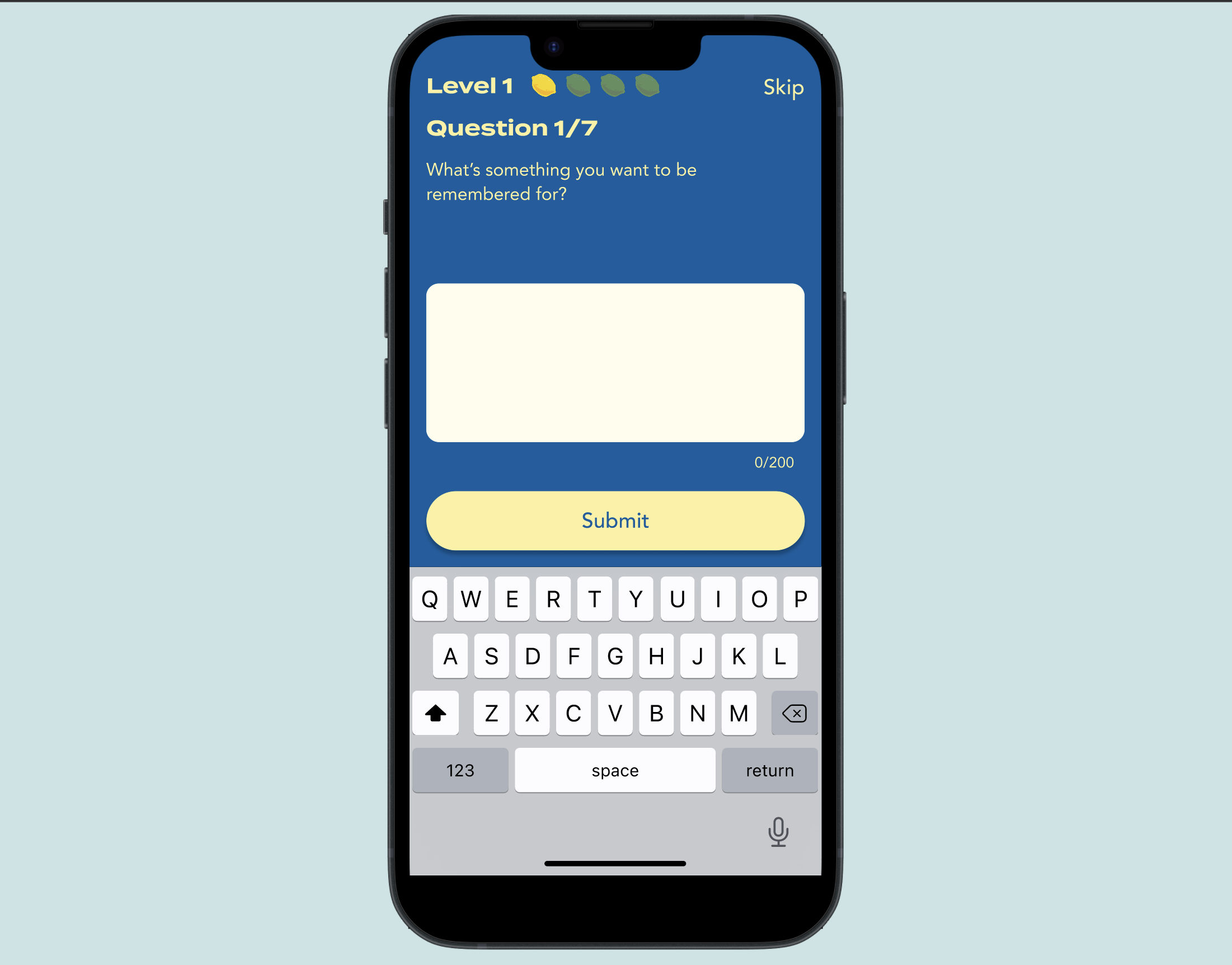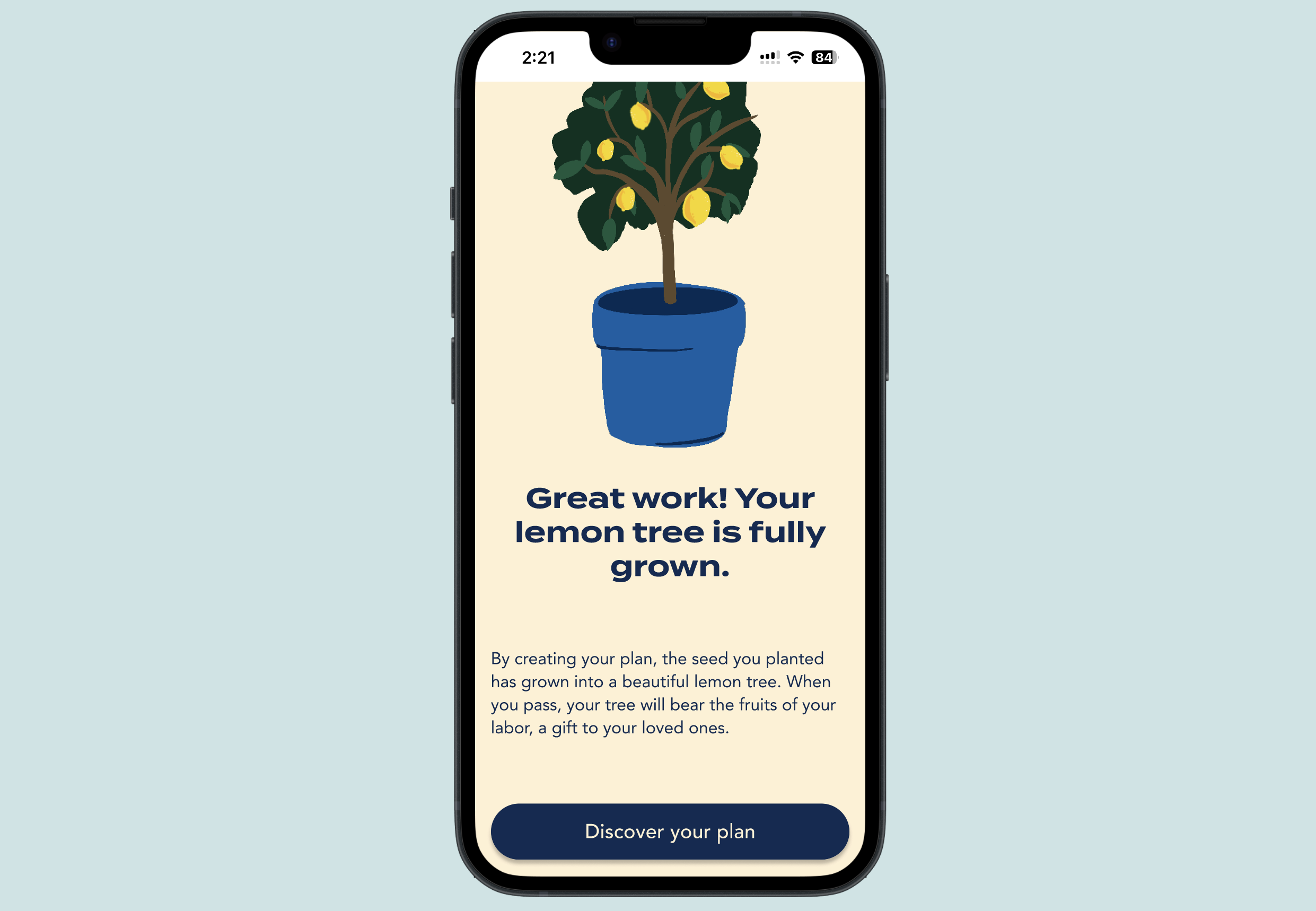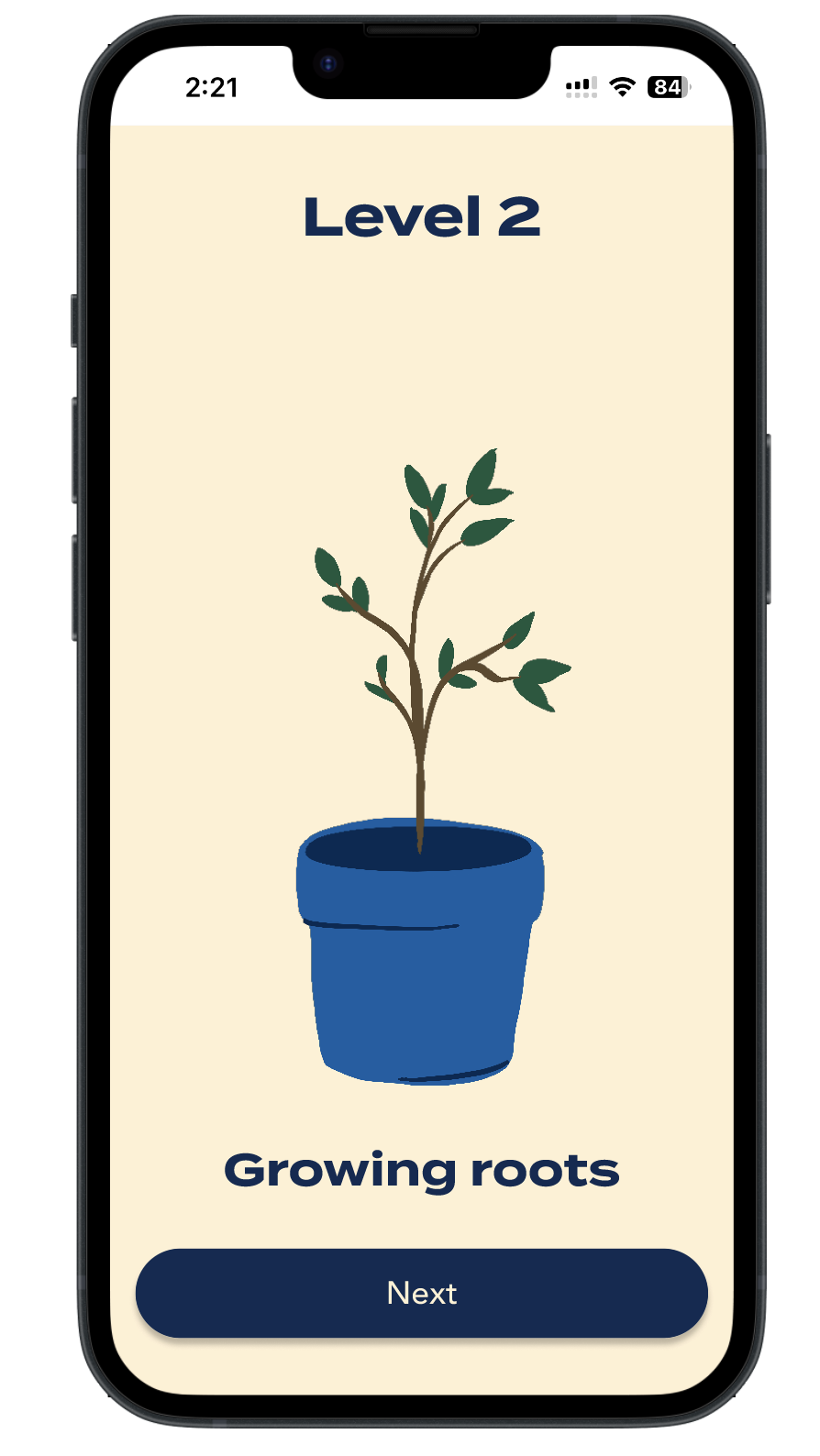Project Forethought
Service Design, UX Writing, UX Research
Overview
Background
Funeral planning is not something that anyone wants to go through, but many people have to. By engaging with their loved ones in conversation, Project Forethought aims to fulfill future wishes and alleviate the funeral planning burden from the family when the individual has passed. My team and I used an iterative process for this class assignment to design a service for end-of-life planning that facilitates informed conversations and empowers individuals to make decisions in advance.
Roles
Lead service designer
UX writer
Support researcher
Responsibilities
Design the overarching end-to-end service, research, ideate, prototype, and evaluate the experience
Team
Timeline
2 UX/UI Designers
1 UX Researcher
1 Product Manager
7 weeks
Design Challenge
How might we..
Tackle the social taboo surrounding death
Promote open and meaningful dialogues among loved ones about end-of-life arrangements
Honor individuals’ post-life desires and alleviate the burden of funeral planning when the time arises
What is Project Forethought?
Project Forethought is a funeral planning experience aided by phones and computers/TVs. The experience eases users into the topic of end-of-life planning by facilitating conversations through progressive levels of questions. The final level of questions helps users plan their funeral step-by-step, saving their answers in a comprehensive funeral plan that can be edited and shared.
How It Works
1) Read questions for each level on your TV screen
2) Reflect individually and submit your answer on your phone
3) View your each other’s answers and discuss
4) Complete all 4 levels to receive your personalized funeral plan
Design Process
Generative Research
Methods
Service Safari
Desk Research
16 informal interviews
Funeral Home Service Safari
To better understand the current process for creating funeral plans, I set up a consultation meeting with a funeral director at Dignity Memorial and worked with him to plan my own funeral.
The funeral planning booklet given by Dignity Memorial
Calculating costs for my planned funeral with the funeral director
Generative Research Key Findings
-
“There’s that level of human nature that it’s just uncertainty so it’s easier to not talk about it and ignore it than to face it while we’re healthy. People put it off until they don’t have a choice anymore.” — Interviewee, 23yrs old
I asked the funeral director how I tell my family about these plans.
He responded with, “You just tell them.”
Design Objective: Help younger audiences break the stigma in order to make pre-death plans.
-
”It was horrible to plan my father's funeral when he passed away; I didn't know who to call or what to do. My mother-in-law has already told me that everything is paid for and decided. I just have to call a number to execute everything.”
— Interviewee, 57yrs old
Design Objective: Aid the process of making end-of-life plans to remove the burden from loved ones.
-
“Funeral directors helped moderate decisions. They had a checklist and encouraged us to move on to the next decision if there was discrepancy among us siblings.” — Interviewee, 55yrs old
“...even having motorcycles in a church is possible, you just need to tell us what to do. Without plans in place, it’s hard to not do cookie cutter funerals” — Funeral DirectorDesign Objective: Help the family make decisions easily with knowledge of what the deceased would have wanted.
-
“Something I’d like to change, although it’s hard. A priest spoke. I would’ve liked that someone who really known her would speak. I remember the priest’s message felt very standard.”
— Interviewee, 26yrs old
Design Objective: Create the opportunity for a personalized funeral without putting the onus on the family to plan it.
A funeral plan is not effective if it’s not shared with anyone else. The team and I decided to focus specifically on helping people facilitate conversations around death and funeral planning to ease them into the process of actually making the plans the plans. Based on our findings, I realized the importance of having the funeral-planning conversation, as well as how difficult that conversation can be.
“That’s not a comfortable conversation but what’s really uncomfortable is sitting across from the funeral director not knowing what the hell to do.”
— Funeral Director, on how to bring up end-of-life plans with family
Assumptions
From our generative research, the following assumptions surfaced. I referenced and considered these assumptions when making design decisions.
Funerals are not personalized when not planned in advance
There is a heavy burden on family members to plan a funeral while grieving the loss of their loved one
People may know of certain end-of-life planning services but not know how to begin the planning process or feel that they don’t have a reason to begin the process yet
Talking about death is difficult and stigmatized, especially for those who are considered to be in the earlier stages of life
Designing the Service Experience
In order to flesh out the product, business, and user details, I created scenarios, archetypes, journey maps, and a lean canvas alongside my team.
Once we established the core features of Project Forethought, my team took on distinct roles. I led the service design team, focusing on product discovery, user onboarding, screen connections, digital experience, and information flow. Detailed steps and information were plotted out, and I translated these into content while communicating design requirements to the UX/UI team.
Establishing requirements for each step of the experience
Plotting out the service experience with teammates
Theming the Experience
The theme of a lemon tree was also designed into to Project Forethought. This theme was essential to creating a coherent service design and helped ground all the different aspects together.
Why a Lemon Tree?
Your eventual passing may be sour like a lemon, but your gift of a funeral plan is sweet.
Through initial research, I found that death comes with bitter emotions. When the mourner also has to plan a funeral, these emotions are intensified and bring in new, negative emotions as well. In the same way that lemons are a tangible gift from the tree, a funeral plan is a tangible gift to your loved ones after you pass.
Experience Testing
Goal
Evaluate the effectiveness of Project Forethought to facilitate conversations around death
Responsibilities
Round 1: Wizard
Round 2: Moderator
Round 3: Observer
Method
RITE Testing
Wizard of Oz (WoZ) Testing
Semi-structured interviews
Participants
1 married couple
1 long-term relationship couple
1 parent-adult child pair
The Wizard of Oz Setup
Using the Wizard of Oz method allowed us to test the experience without requiring engineering resources to build it first. This allowed for rapid iterations and saved both time and money for the theoretical business.
The “back end” of the WoZ setup: two wizards inputting users’ answers, myself as a wizard moving the display forward
The “front end” of the WoZ setup: two participants going through the funeral planning experience together
To test this as a holistic experience without engineering support, we asked users to submit answers through text entry and displayed them on the display monitor using AirPlay. Two participants were in a room with the monitor, while the research team observed from outside for privacy and natural conversations. Participants texted their answers to team members ("wizards"), who pasted them onto the Figma prototype. Another wizard used a presenter remote to advance the prototype for the participants to see their answers on the monitor.
Iterations
-
Method Iterations
In the first round, we asked participants to fill out a pre and post survey with 3 questions surrounding their current perceptions and experiences discussing death and pre-death planning
Design Iterations
Participants were shown a low-fidelity version of the prototype that was personalized with their names, starting with the first question.
-
Method Iterations
During Round 1, we found that participants were repeating their survey answers during the follow-up interview, so we incorporated the post-survey questions into the follow-up interview to optimize time.
Design Iterations
We added a welcome screen to the prototype so that participants would not be viewing their first question during the welcome portion of the experience. This allowed us to reveal the first question on our own terms once we were ready to begin the experience.
-
Method Iterations
Rather than testing couples, we decided to test with a parent-adult child duo to see how the dynamic of a generational difference would affect the experience.
Design Iterations
For Round 3, we decided to test the experience without the text-entry to determine if it was necessary for participants to type their answers or if the question alone was enough to facilitate discussion.
We also updated the visual design of the experience and added an introduction screen before each level to emphasize the differences between the questions.
Using the RITE (Rapid Iterative Testing and Evaluation) method, we made iterations on both the method and the design between each test. Expand the sections below to see the iterations made during each round.
Findings
Participants didn’t change the way they thought about end-of-life planning, but they did start to think about it
Increasing levels of intensity eased participants into the discussion before the actual funeral planning
Participants found value in storing the discussed information as a way to leave their end-of-life wishes
Age plays a role in the intensity of the experience, perhaps due to perceived “closeness” to death
Text-entry allowed participants to personally reflect on a question and their answer before sharing it
To use the limited time effectively, I incorporated research findings into the design throughout the RITE process. This allowed the team to take direct action from research and continuously improve the product.
Takeaways
Reflection
In future iterations, I would like to test the questions themselves and have users engage in a card sorting exercise to determine which questions belong in which level.
The team and I ultimately chose to focus our design on married couples. In the future, we would expand this to include a secondary market of parents and their adult children. Some participants mentioned this would be helpful for them to use with their parents, but their parents were the ones who were hesitant to talk about their plans. By focusing on couples as our target market, adult children could then encourage their parents to engage in this experience, reassuring them based on their own previous experience.
Next Steps
I encouraged the team to lean into, rather than away from, the competition to figure out what we could do better. This revealed to me how important it is to do so in order to make your product truly unique.
Communication is key among team members with different roles - it’s imperative to communicate all decisions made to avoid misalignment
I enjoyed designing the information experience and ensuring that users would have the right amount of information at the right time


















